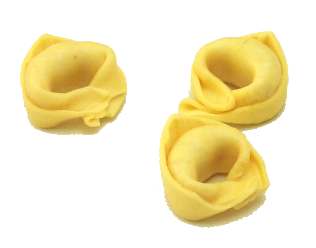Facts About Tortellini
Tortellini, the beloved ring-shaped pasta, hails from the region of Emilia in Italy. Often described as "navel-shaped" or resembling a "belly button" its distinctive appearance is reminiscent of a large wonton. Traditionally, tortellini are stuffed with a savory blend of meat, Parmigiano Reggiano cheese, egg, and nutmeg, and are typically served in a warm capon broth. While handmade or freshly prepared tortellini are a staple in Italy, packaged versions are available globally, especially in areas with significant Italian communities.
The origin of tortellini is a subject of friendly rivalry between Bologna and Modena, both located in the Emilia-Romagna region, each claiming its creation. The name "tortellini" derives from "tortello" a diminutive of "torta" which means cake. Historical recipes date back to the 16th and 17th centuries, with legends suggesting that the pasta’s shape was inspired by the navel of a woman or architectural details in Modena.
There is also a larger cousin to tortellini called tortelloni. Unlike tortellini’s meat-based filling, tortelloni are typically filled with ricotta, parsley, or spinach. They are cooked in water, sautéed with butter and sage, and served dry, contrasting with their broth-bathed counterparts.
Making tortellini involves several steps: kneading the dough, preparing the filling, cutting the dough into squares, adding the filling, and then shaping the pasta. For home preparation, basic tools such as a chopping board and rolling pin are needed. On an industrial scale, the process utilizes specialized equipment including mincers, kneading machines, sheeters, and forming machines.

 San Marino
San Marino